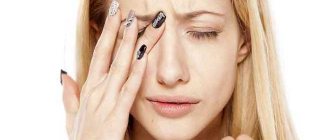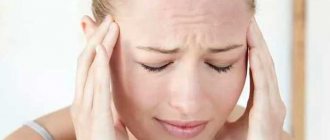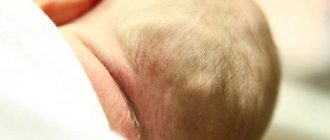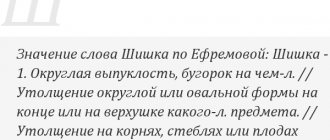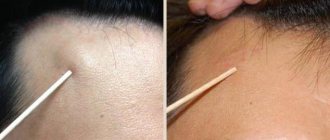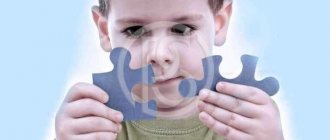Children rarely go without scratches and abrasions. Little fidgets, trying to be on time always and everywhere, often fall, hit themselves, and get bruises. A lump on a child's head can cause great concern. This phenomenon cannot be ignored. The lump does not always appear from a blow; it can be a symptom of a serious illness.
Bumps on the head of children are a common occurrence.
Why does a child have a bump on his head?
Parents who find a lump on the back of their child’s head are advised to know that this is not always a consequence of a blow. There are many reasons for the occurrence of neoplasms.
Insect bites
During insect activity in spring and summer, bumps often appear as a result of bites. Most often they do not pose a danger, but they cause discomfort. The site of inflammation may hurt, redness appears, and the child is bothered by itching. The seal goes away on its own after a few days.
As a result of the impact
A bump on the top of a child's head is often formed as a result of a fall or blow from something hard on top. While playing, the baby may hurt his head. Due to mechanical damage, a hematoma forms. It may vary in color. When pressed, a sharp pain occurs. The formation takes place on its own; to speed up the process, the doctor may recommend anointing it with special ointments or creams.
If a soft tissue bruise occurs, then most often the tubercle subsides within a few hours. The appearance of a hematoma indicates that the vascular area is damaged.
Important! Be sure to consult a doctor if a lump occurs after a bruise. A neoplasm can be very dangerous. If there is a crack in the skull, severe bleeding may occur.
Parents can provide first aid before the damage is examined by a specialist. To do this, apply ice to the area of impact and make a cold compress from any cloth moistened with cold water. If there is nothing cold, you can apply a cotton swab treated with vegetable oil to the bruised area. The doctor may prescribe medications to resolve the hematoma, prevent thrombosis, and relieve swelling. It is important to rule out a concussion.
If you fall, you need to ensure rest before being examined by a doctor, and it is important not to let the child fall asleep. This is necessary to control his condition.

Often, hematomas in the head area occur due to blows
The lymph nodes
Large lumps on a child's throat that extend into part of the head may appear as a result of inflammation of the lymph nodes. The seals are easily palpable and visible visually. They can form not only near the head and neck, but also in the armpits.
The disease can occur either independently or as a result of an infectious pathology, for example, chickenpox. The child may develop additional symptoms such as fever, loss of appetite, and lethargy. When you touch the lump, pain is felt. If treatment is not started in a timely manner, the inflammation may turn purulent.
Lipoma (wen)
This is a type of benign tumor that forms from adipose tissue. It does not cause inconvenience because it does not hurt. When pressed, the tubercle is mobile and soft. The causes of lipoma may be hormonal imbalance, stroke, or problems with fat metabolism. It is necessary to treat a lipoma only if it grows strongly, as it can begin to compress adjacent skin tissues.
Other reasons
Often, mothers of newborns discover a soft lump on a child’s head. This is a hematoma that occurs as a result of mechanical trauma during the birth process. Damage can be caused by instruments used by medical personnel. It is most pronounced in the first month of the baby’s life. Most often, the neoplasm disappears completely within a year.
A lump in a child may occur as an allergic reaction. For example, after vaccination with DPT, lumps form on the legs of babies. Therefore, after any injection, vaccination or taking a new drug, it is important to look at the baby’s reaction.
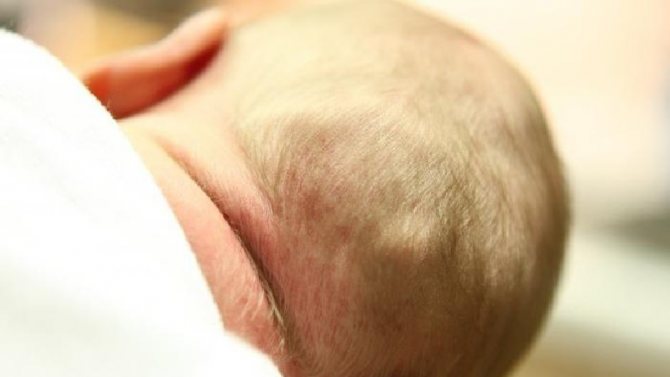
Neoplasms can often be seen in newborns as a result of injury during childbirth
How to protect your child's head from blows
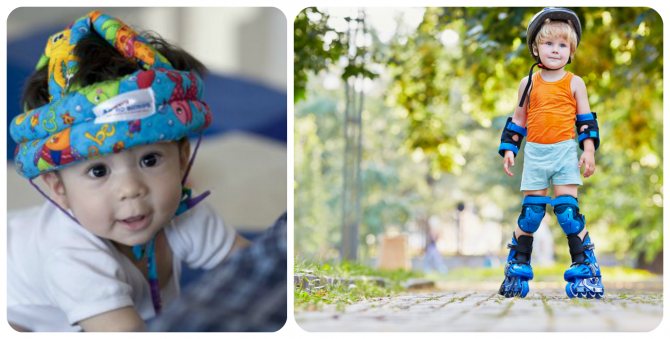
You should always be on guard with a baby. This even applies to a newborn, who, it would seem, cannot even turn on his side. After all, it is the absence of a mother that can prompt a baby to learn to roll over right on the changing table.
Such tables are convenient for parents, but from a safety point of view, a large soft surface (a bed or a blanket spread on the floor) is preferable for changing clothes. Let the baby always be under supervision or in a safe area - in the playpen.
It is unwise to neglect seat belts in a stroller. Although the baby is not yet able to get out of it, nothing can guarantee that the stroller will not tip over if it hits a bump. The straps will keep the little passenger from falling onto the road. It is not for nothing that there are belts on high chairs, because a fall from such a height onto the floor or tiles can result in injury.
When the baby begins to explore the space at home and often bumps, you need to look at the surrounding objects from the height of his height and protect every sharp corner with silicone pads. For children learning to walk, there are special socks and tights with non-slip soles.
Kids often trip and hit themselves when going down the stairs, so you need to not let go of the child's hand. While climbing the steps, you also need to hold the baby’s hand or secure him from behind, as there is a danger of falling on his back.
Many injuries happen on the playground. It is dangerous to play next to older children; it is better to distract and take your baby away. If it is not possible to leave, then the mother should be near the child. You need to be especially vigilant near swings, carousels and other moving structures.
Children who have shown a desire to master roller skates or a balance bike must immediately be taught that they must wear a helmet. The young athlete should also be taught how to fall correctly.
Parents should know what to do if their child does hit their head. And you need to patiently explain to your children how important it is not to hit themselves. Infants simply need to be protected, and older children need to be taught household safety rules.
Source
The main danger of bruises to the head is brain damage. However, you shouldn’t take off and run to the emergency room at every blow.
Does your child get injured often?
Not really
Let's look at the types of traumatic brain injuries (TBI), their symptoms and consequences, as well as the actions that need to be taken if a child hits the back of his head.
Associated symptoms
If an occipital neoplasm does not go away on its own over a long period of time, it is necessary to show the child to a doctor. Often at such moments additional symptoms appear:
- rapid heartbeat, parents can control it themselves by placing a finger on their wrist;
- pale skin;
- long-term pain in the area of inflammation;
- the size of the pupils changes;
- there is a violation of coordination of movements, orientation in space;
- general weakness, dizziness, nausea, vomiting;
- heaviness when turning the head.
The child may be bothered by severe headaches that occur with increasing intensity, and loss of appetite. If at least one of the listed signs appears, you must immediately call an ambulance. Their presence indicates the development of severe pathology. Often, the success of treatment depends on how long after the tumor occurred the parents sought qualified help.
First aid
- The first thing you need to do is calm down and not panic.
- It is important that the baby is at rest after the impact.
- Inspect the site of the injury, check for abrasions and bruises.
- If a hematoma appears, it is necessary to apply a cold or ice object to the site of the bruise, but do not forget to wrap it with cloth first.
- If the bruise is bleeding, you need to disinfect it, for example, with hydrogen peroxide. Use cotton swabs.
- If visual damage is not noticeable, explain to the child that he now needs peace and only quiet games. And monitor his well-being for several days.
- If you identify any symptoms that characterize a complication of the baby’s condition, you need to call an ambulance. This should also be done in case of severe bleeding, fainting and other alarming symptoms.
- It is important to know that if the baby loses consciousness, he must be placed on his side. It is also important to do this if there is vomiting, so that it does not accidentally enter the respiratory system.
- Even if, at first glance, everything is fine with the child, sometimes it is better to play it safe and go to see a doctor.
Diagnosis of pathology
During the initial examination, based on appearance and size, the doctor can guess the factors that caused the formation of a bulge on the baby’s head. The main criteria that the specialist focuses on during the examination are:
- number of neoplasms;
- size;
- location;
- color;
- general condition of the child.
To make an accurate diagnosis, the baby is prescribed:
- general blood and urine tests that will show whether there is an inflammatory process in the body;
- MRI, CT.
Based on the results of the examination, a diagnosis is made and, if necessary, treatment is prescribed.
Important! You cannot try to self-medicate or apply folk remedies to emerging formations. All appointments should be made only by a specialist.
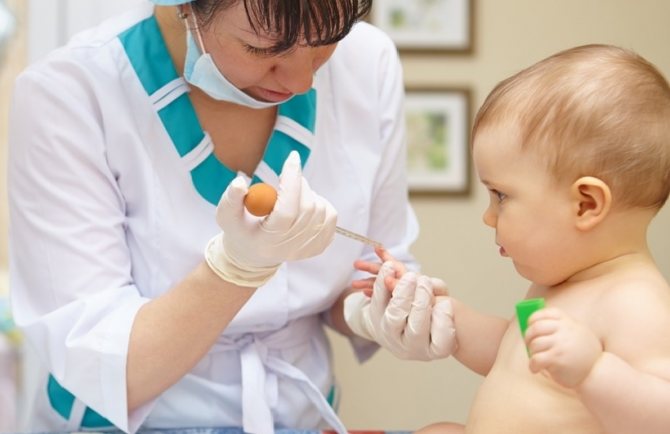
Laboratory tests are ordered to determine the cause.
When to see a doctor immediately
You should immediately consult a doctor if a bump on your child’s head appears as a result of injury or mechanical damage. If the baby’s condition worsens sharply, the following symptoms will occur:
- the appearance of drowsiness;
- severe dizziness;
- pale skin;
- the occurrence of seizures.
Important! In such a situation, parents should call an ambulance. Before the doctors arrive, provide the child with complete rest by placing him on his side.
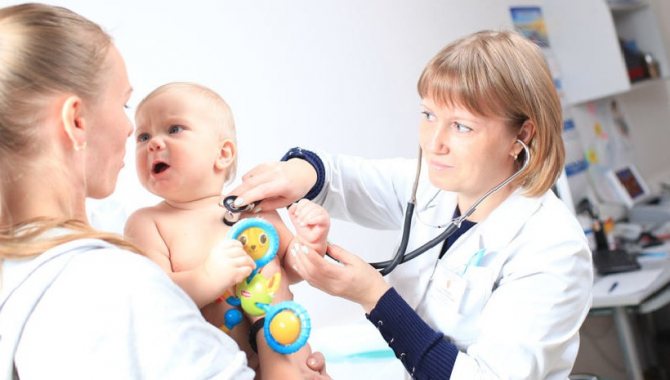
If a child is bothered by a severe headache, nausea, vomiting and weakness, it is necessary to urgently call an ambulance
What to expect when admitted to hospital

The doctor will examine the victim, ask him or his parents to tell him about the blow, clarify whether he hit the back of the head or the forehead, assess the damage and advise on further actions.
The baby will probably be sent for a CT scan of the brain to rule out hemorrhages and fractures. Patients up to one and a half years old are examined through a fontanelle that is not yet closed.
Possible consequences and complications
If a child has a tubercle on his head, this requires increased attention. If the tumor appears as a result of a blow or fall, it is very important to exclude a concussion, which requires long-term treatment and bed rest. The condition of blood vessels is also examined - as a result of injury, the risk of their rupture increases.
Important! The danger of bumps on the head is that without the manifestation of additional symptoms, they can quickly turn from benign tumors into malignant ones and metastasize to other organs.
Severe complications can occur if a purulent process develops in the lump. This can lead to an abscess and pathological conditions.
Any actions with neoplasms in the head area in children should be performed only after consultation with a doctor. If we are talking about seals that appeared as a result of a bruise, special ointments and compresses can be prescribed.
There are many types of neoplasms that, for various reasons, appear on a child’s head. They can be both benign and malignant, so you should not neglect visiting a doctor.

